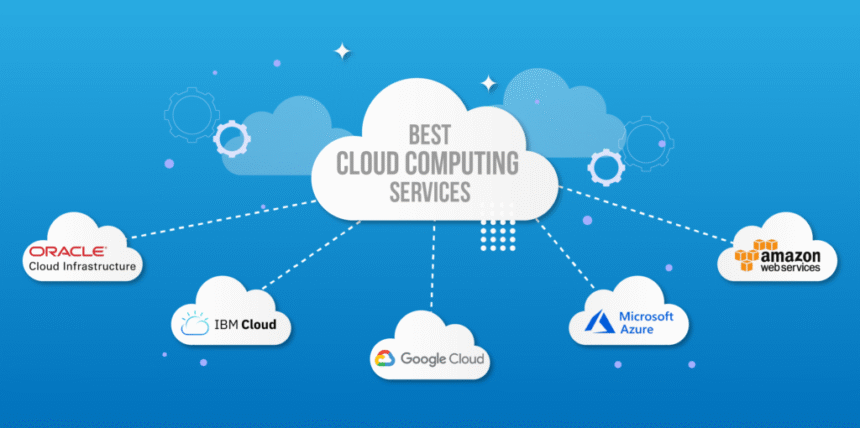Cloud computing has quickly become one of the most pivotal technological advancements of the modern era. As businesses and individuals increasingly move their operations to the cloud, cloud computing services have transformed the way data, applications, and computing power are utilized. From startups to multinational corporations, the benefits of cloud services are undeniable, including cost savings, scalability, and increased efficiency.
In this post, we will explore the future of cloud computing services, examining emerging trends and innovations that are shaping the landscape. We will also discuss how businesses and individuals can capitalize on these changes to stay competitive and relevant in a rapidly evolving digital world.
Understanding Cloud Computing Services
Cloud computing services refer to the delivery of computing resources such as storage, servers, networking, databases, software, and analytics over the internet. Instead of maintaining physical data centers and servers, users can access these resources through cloud providers like Amazon Web Services (AWS), Microsoft Azure, Google Cloud Platform (GCP), and others. This paradigm shift allows businesses to access cutting-edge technologies without the need for heavy investments in physical infrastructure. It also ensures scalability, flexibility, and enhanced reliability.
There are several types of cloud computing services that cater to different business needs:
- Infrastructure as a Service (IaaS) – IaaS provides virtualized computing resources over the internet. It allows businesses to rent physical and virtual servers, storage, and networking components. AWS EC2, Google Compute Engine, and Microsoft Azure are popular IaaS offerings.
- Platform as a Service (PaaS) – PaaS offers a platform and environment for developing, testing, and deploying applications. This service abstracts the underlying hardware and software infrastructure, enabling developers to focus on building and running applications without worrying about managing the infrastructure.
- Software as a Service (SaaS) – SaaS delivers software applications over the internet. Rather than buying and installing software on local machines, businesses can access applications via web browsers. Examples of SaaS include Google Workspace, Salesforce, and Dropbox.
- Function as a Service (FaaS) – FaaS, also known as serverless computing, allows developers to run code in response to specific events without managing the underlying server infrastructure. This model is ideal for workloads that require scaling and event-driven execution.
With these models, cloud computing services allow businesses to shift from a capital expenditure (CapEx) to an operational expenditure (OpEx) model, where they only pay for the resources they use, reducing costs and enhancing flexibility. The ability to scale infrastructure up or down depending on demand has made cloud services a critical enabler of innovation and agility.
Emerging Trends in Cloud Computing Services
As the cloud computing landscape continues to evolve, new trends and innovations are emerging that are reshaping the future of this industry. Below, we explore the most notable developments that will have a profound impact on the next generation of cloud computing services.
1. Hybrid and Multi-Cloud Environments
One of the most significant trends in cloud computing services is the adoption of hybrid and multi-cloud environments. These strategies provide businesses with greater flexibility and risk management. A hybrid cloud combines public and private cloud services with on-premises data centers. This setup allows organizations to keep sensitive data and workloads in a private cloud or on-premises system while taking advantage of public cloud services for less critical workloads.
A multi-cloud environment involves using multiple cloud service providers to avoid vendor lock-in and ensure redundancy. By leveraging a variety of cloud services, businesses can select the best solution for each workload, based on performance, cost, and geographic availability.
The adoption of these models is driven by several factors:
- Avoiding Vendor Lock-in: Businesses want to avoid becoming too dependent on a single cloud provider, which can create risks and increase costs.
- Improved Disaster Recovery: By using multiple clouds, businesses can ensure redundancy, making it easier to recover from failures or disruptions.
- Flexibility and Cost Optimization: A multi-cloud approach allows businesses to choose the most cost-effective solution for specific workloads, enabling optimization of cloud spending.
As companies increasingly adopt hybrid and multi-cloud strategies, the need for integrated management tools and solutions will continue to grow, making these cloud architectures essential in the future of cloud computing.
2. Edge Computing: Extending Cloud Services to the Edge
Another important trend is the rise of edge computing, which extends the capabilities of cloud computing services by processing data closer to the source of the data, rather than relying solely on centralized cloud data centers. In edge computing, computing tasks are performed at the “edge” of the network, such as on local devices, sensors, or micro data centers located near the user.
The growing adoption of edge computing is driven by the need for:
- Low Latency: For applications that require real-time data processing, such as autonomous vehicles, smart cities, and industrial IoT (Internet of Things) systems, edge computing reduces latency by processing data locally rather than sending it to a central cloud server for processing.
- Bandwidth Efficiency: With more IoT devices generating large volumes of data, sending all of this data to centralized cloud servers can create bottlenecks. Edge computing allows for local data processing, reducing the amount of data that needs to be transmitted to the cloud.
- Reliability and Resilience: Edge computing ensures that critical systems can continue to function even when the connection to the central cloud is interrupted, enhancing reliability in remote or bandwidth-constrained environments.
By bringing computing resources closer to the user or device, edge computing enables cloud computing services to deliver faster, more responsive experiences in a wide range of applications.
3. The Integration of Artificial Intelligence (AI) and Machine Learning (ML)
The integration of Artificial Intelligence (AI) and Machine Learning (ML) into cloud computing services is another transformative trend. Cloud service providers are increasingly embedding AI and ML capabilities into their platforms, enabling businesses to leverage these powerful technologies without the need for specialized infrastructure or expertise.
Some of the key benefits of integrating AI and ML into cloud computing services include:
- Advanced Analytics: Cloud-based AI and ML tools can analyze vast amounts of data to identify trends, make predictions, and generate actionable insights. This is particularly useful for industries like finance, healthcare, and retail, where data-driven decision-making is essential.
- Automation: AI and ML algorithms can automate routine tasks, such as data management, security monitoring, and customer support, allowing businesses to streamline operations and reduce human error.
- Improved User Experiences: By leveraging AI-driven cloud platforms, businesses can create personalized experiences for their customers, such as recommendation engines, chatbots, and sentiment analysis tools.
As AI and ML continue to advance, their integration with cloud computing services will unlock new capabilities, empowering businesses to make smarter, faster decisions and drive greater efficiency.
4. Serverless Computing: The Next Evolution of Cloud
Serverless computing, also known as Function as a Service (FaaS), is a growing trend in cloud computing services. In this model, developers can run code in response to events without worrying about managing the underlying infrastructure. This allows businesses to focus on their applications rather than the logistics of scaling and maintaining servers.
The key advantages of serverless computing include:
- Cost Efficiency: With serverless computing, businesses only pay for the actual computing resources used during code execution, rather than paying for idle server time. This makes it a cost-effective solution for handling fluctuating workloads.
- Scalability: Serverless platforms automatically scale based on demand, ensuring that applications can handle large volumes of traffic without requiring manual intervention.
- Simplified Development: Developers can focus on writing code and deploying applications without worrying about the underlying infrastructure. This simplifies the development process and accelerates time-to-market.
As organizations look for ways to optimize their cloud computing costs while maintaining scalability and flexibility, serverless computing will continue to grow in popularity and become an integral part of the cloud computing services ecosystem.
5. Cloud-Native Applications and Microservices
Cloud-native applications are designed specifically to run in cloud environments. These applications are built using microservices architectures, where large applications are broken down into smaller, independently deployable services that can be developed, tested, and maintained separately. This approach enables businesses to take full advantage of cloud computing services, optimizing scalability, flexibility, and resilience.
The advantages of cloud-native applications include:
- Scalability: Each microservice can scale independently, allowing businesses to allocate resources to the parts of the application that need them the most, without over-provisioning or underutilizing resources.
- Resilience: Microservices are designed to be fault-tolerant. If one microservice fails, it does not affect the entire application, ensuring that critical services remain available.
- Faster Development and Deployment: Microservices enable teams to work on different components of an application concurrently, accelerating development cycles and making it easier to deploy new features.
As businesses increasingly adopt cloud-native architectures, the demand for specialized cloud computing services designed to support microservices and containerization will continue to grow.
6. Cloud Security: Protecting Data in the Cloud
As more businesses move their operations to the cloud, cloud security becomes a critical concern. The growing volume of sensitive data stored in the cloud has made it a prime target for cybercriminals, highlighting the need for robust security measures.
Key trends in cloud security include:
- Zero-Trust Security Models: The zero-trust approach assumes that no one, whether inside or outside the organization, should be trusted by default. All access requests are authenticated, and permissions are granted based on the least privilege principle.
- Data Encryption: Encrypting data both at rest and in transit is essential to ensure that even if data is intercepted, it remains unreadable to unauthorized parties.
- Identity and Access Management (IAM): IAM systems help organizations manage and control user access to cloud resources, ensuring that only authorized individuals can access sensitive data.
As organizations continue to move sensitive workloads to the cloud, robust cloud security solutions will be a top priority for businesses seeking to protect their data and maintain regulatory compliance.
The Role of Cloud Computing Services in Business Transformation
The future of cloud computing services is deeply intertwined with the ongoing digital transformation of businesses. As more organizations embrace cloud technologies, they are finding new ways to innovate, optimize processes, and deliver exceptional customer experiences. Cloud computing enables businesses to:
- Scale Globally: With cloud computing services, businesses can expand their reach globally without the need for expensive physical infrastructure, allowing them to enter new markets quickly.
- Improve Collaboration: Cloud-based tools enable real-time collaboration among teams located across the globe, fostering innovation and improving productivity.
- Enhance Customer Experiences: By leveraging cloud computing services, businesses can access advanced tools such as AI, ML, and IoT, which enable them to deliver personalized experiences to customers.
The future of cloud computing is all about agility, scalability, and innovation. As the industry continues to evolve, businesses that embrace these changes will be well-positioned to lead in their respective markets.
Conclusion
The future of cloud computing services holds immense potential, with advancements in edge computing, AI, serverless technologies, and cloud security transforming the way businesses operate. As more organizations embrace these innovations, the cloud will continue to drive digital transformation, enabling businesses to scale, innovate, and provide exceptional value to their customers.
By understanding and leveraging these emerging trends, businesses can unlock new opportunities and maintain a competitive edge in the rapidly changing digital landscape. Whether you’re a small startup or a large enterprise, cloud computing services are essential for staying ahead of the curve and succeeding in the digital era.

